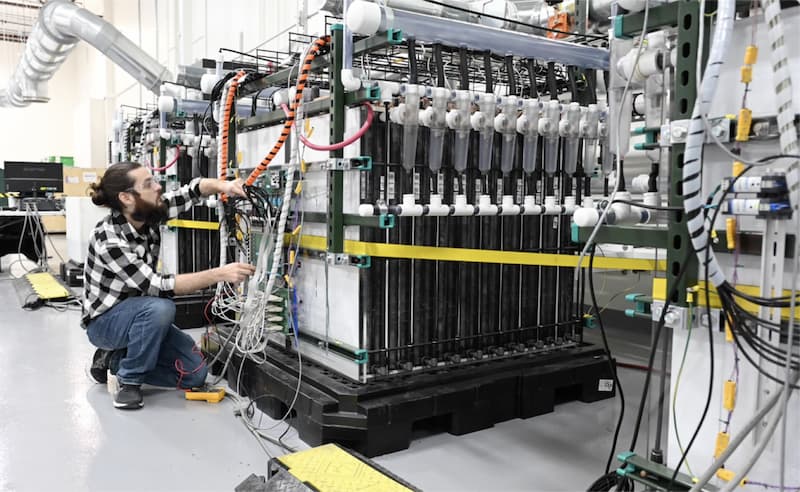Boston-based startup Form Energy recently announced it has been awarded a $12 million grant from the New York State Energy Research and Development Authority (NYSERDA) to deploy a 10 MW/1000 MWh pilot battery project in New York by 2026. This will be Form Energy’s first grid-scale project in the state following similar announcements in Colorado and Minnesota.
Form Energy’s iron-air battery technology can deliver 100 hours of discharge
eco-friendly solar mounting systems costs competitive with conventional power plants. The multi-day duration positions it well to help New York meet its ambitious clean energy targets – a clean grid by 2040.
NYSERDA awarded the grant as part of its $17 million long-duration energy storage program, intended to accelerate commercialization of promising long-duration technologies. New York has set a goal of 100% carbon-free electricity by 2040 and will need technologies like multi-day storage to ensure reliability during extended lulls in wind and solar generation.
“Our analysis indicates that multi-day storage has significant potential to help New York meet its decarbonization and grid reliability goals,” said Mateo Jaramillo, CEO of Form Energy. “This grant allows us to accelerate deployment of our first multi-day battery system in New York and sets the path for us to deliver further multi-day storage projects in the State in the future.”

An analysis recently released by Form Energy provides further evidence that multi-day energy storage like its iron-air technology can substantially reduce the costs for New York to achieve its ambitious decarbonization targets.
The analysis used advanced modeling techniques to compare multiple scenarios with varying availability of
ground-mounted solar generation capacity durations. It found that including both long-duration (10 to 24 hour) and multi-day (>24 hour) storage in the mix of resources available to meet New York’s goals reduces total system costs in 2040 by 29% compared to relying solely on short-duration lithium-ion batteries.
In the models with only short-duration lithium-ion batteries available, over 60 GW of battery capacity is built by 2040 to shift renewable generation and meet peak demand. However, this capacity only provides 538 GWh of energy storage.
Whereas when long-duration and multi-day storage are available, total storage capacity needs drop to around 40 GW. But critically, total energy storage capacity grows nearly 10x to over 5,000 GWh. These large energy reserves allow the grid to smooth multi-day variability in renewable generation. The emphasis on iron-air storage also avoids the potential fire-hazard of lithium batteries. According to Julian Spector at Canary Media, three separate fires at lithium battery facilities in New York owned by Nextera and Convergent Energy have left the state’s Governor Hochul scrambling to assure local residents that the transition to a clean grid is safe and healthy.
Models show 35 GW of multi-day storage capacity is optimal by 2040. This includes 19 GW of iron-air batteries (or equivalent) plus 16 GW of hydrogen storage. In tandem with 4 GW of lithium-ion batteries and pumped hydro storage, this diverse portfolio of storage durations provides the flexibility to shift renewable energy across multiple timescales.
